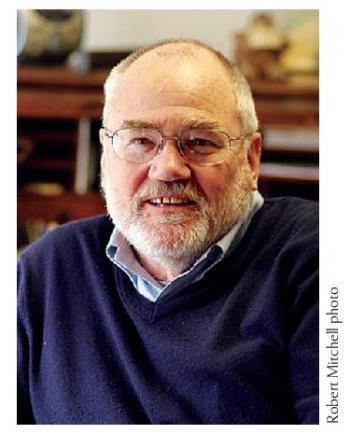Week 19: Images matter
Bob Mitchell, one of our notable Maine photographers, had a birthday last week.
As with a lot of local artists, you may know his work but may not know him. Too bad, for he is a delightful man, his smile is infectious, his work superb.
As a word guy, I always admired the ability of photographers, “shooters,” we call them, to capture the moment. Whether it is the image of an old skiff on a mudflat, a rainbow reflected upon a pond, or a delicate flower, we can’t seem to forget the moment they bring to us with their art.
But life is not always pretty. “Shooters” bring those images to us, too. And we are in a moment where our nation is being bombarded with troubling images that may change us all.
A month or so ago, some kid with a cell phone or a bunch of folks with cell phones sent us images of a man named George Floyd, who had been arrested by the cops in Minneapolis for some minor offense. For some reason, it turned into a scuffle that the cops won. Suddenly, they had him on the ground, and we watched one cop shove his knee on Floyd’s neck. Then he was dead.
The Floyd photos captured the most recent incident of police misconduct that challenged our long-held beliefs that “Officer Friendly” was our pal, our protector, the good guy.
Those images of a cop using his authority and his knee to slay Floyd triggered a national movement that may change America.
We can’t forget these images, and I believe we will see many more in the coming years, for everyone now has a cell phone camera.
Over the weekend, we lost John Lewis, a long-serving congressman from Atlanta, a brave man who changed our nation.
No, it was not because of his legislative accomplishments, although he had an admirable record in the House. It is because he stood up to oppose injustice. And a shooter captured the images of him in action.
In the 1960s, Lewis worked to change the social and legal system that oppressed a whole class of Americans, denying them the rights that our founders enshrined in the sacred documents that made us us.
The founders used the words: “We hold these truths to be self-evident, that all men are created equal, that they are endowed by their Creator with certain unalienable Rights, that among these are Life, Liberty and the pursuit of Happiness.”
To me and some other old-timers, it seems like yesterday. However, more than 60 years ago, Lewis and a couple of hundred other Americans put on their Sunday best and walked down the road to Selma, Alabama, to encourage other Americans to register to vote.
With Lewis at the front of the neat column, they walked across the Edmund Pettus Bridge, a structure named for a Confederate general and former Ku Klux Klan grand pooh-bah.
As they exited the bridge, they were met by a mass of police who blocked their way. When they refused to turn around and go back across the bridge, the police charged them.
Photographers recorded the images of cops beating the marchers, including Lewis, as he lay on the ground.
It is impossible to forget those images, big helmeted uniformed cops flailing away at a group of peaceful, well-dressed citizens. They just wanted to secure Constitutional rights other Americans take for granted, including the right to vote.
Those images broke a legislative log jam and triggered President Lyndon Johnson to push the Voting Rights bills through Congress.
Those of us old enough to grow grey hair or no hair at all also remember other troubling images taken as American troops liberated the Nazi concentration camps at the end of World War II.
As we celebrate the efforts of the “Greatest Generation,” the images from the camps left no doubt their sacrifices were worth it.
Word guys can craft words to move us all. But these words can be forgotten, ignored, and dismissed as “fake” by those who would rather not face the truths they bring to us.
But photographers, like Bob Mitchell and other “shooters,” including ordinary folks with cell phones, bring us images that are seared into the fabric of our souls.
Some of those images are impossible to ignore, impossible to forget.
Since our species crawled out of the muck or tiptoed out of the Garden of Eden, we have scrawled images on cave walls, painted them on canvas, carved them out of stone. This artistry is part of what makes us human.
These images celebrate our children, our world, ourselves. Some make us happy and proud, while others evoke fear and loathing.
Some of them, we can never forget.






























